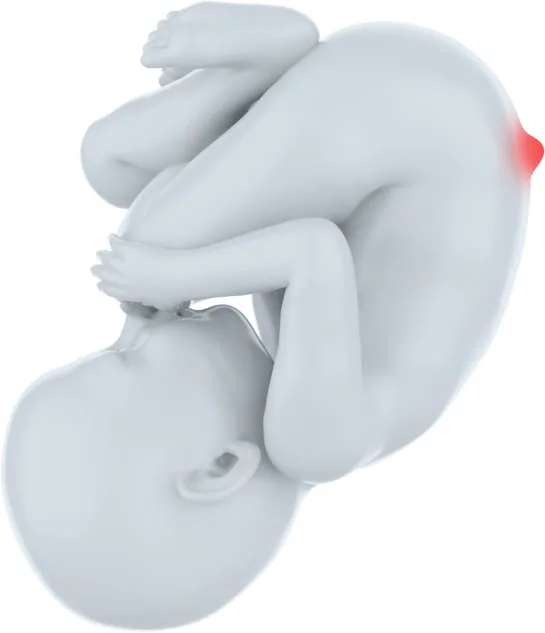Неофолик®
Какво е Spina bifida?
Spina bifida е сериозен вроден дефект на гръбначния стълб. При този дефект се засягат гръбначният мозък, прешлените, мускулите и кожата, изграждащи гръбначния стълб.

Дефектът възниква по време на формирането на главния и гръбначния мозък през четвъртата седмица на бременността, т.е. шест седмици след последния менструален цикъл. В повечето случаи това става преди жената да разбере, че е бременна. В зависимост от тежестта на spina bifida, дефектът може да е видим по гърба на новороденото, но в по-леките случаи не се наблюдават видими анатомични изменения.
Най-тежките форми, представляващи напълно отворен гръбначен стълб, са несъвместими с живота. При по-леките форми може да се наблюдава постоянна слабост в краката, намалена чувствителност и трудност при ходене. Тези форми често водят до инвалидност.
Най-леките форми протичат със симптоми на напикаване и затруднен контрол на дефекация. Всяка жена може да роди дете със spina bifida, дори в случаите, когато няма данни за подобен дефект във фамилната история на родителите.
Приблизително 1 на 1000 бебета се ражда със spina bifida и още 1 на 1000 бебета се ражда с друг дефект на невралната тръба. Приемането на 400 μg фолиева киселина 1 месец преди забременяване и през първите 3 месеца на бременността намалява риска от поява на spina bifida до 80%.


Фолиевата киселина е водоразтворим витамин (Витамин В9), който участва като коензим в биосинтеза на аминокиселините и базите на нуклеиновите киселини. Фолиевата киселина има ключова роля в изграждането и развитието на клетките и жизненоважни структури още в ембрионалното развитие на човешкия организъм. Това се отнася в най-голяма степен до невралната тръба на плода, от която впоследствие се образува главния и гръбначния мозък.
Допълнителният прием на фолиева киселина повишава нивото на фолат в организма на майката. Ниското ниво на фолат при майката е рисков фактор за формирането на дефекти на невралната тръба в развиващия се плод. Ползотворният ефект се постига при допълнителен дневен прием на фолиева киселина от 400 μg поне 1 месец преди и 3 месеца след зачеването.
СъставФолиева киселина

Фолиевата киселина има също изключително важна роля за образуването и метаболизма на еритроцитите (червените кръвни телца), които доставят кислород и енергия до всички тъкани и органи в тялото. Неофолик® е предназначен за бременни жени в първия триместър, за жени, планиращи бременност, както и за мъже и жени, приемащи фолиева киселина от храната в доза по-ниска от дневните нужди. Правилното и редовно приемане на Неофолик® благоприятства нормалното протичане на бременността, изграждане на здрава и пълноценна неврална тръба на плода и правилно развитие на тъканите и органите на новороденото, като в значителна степен намалява риска от развитие на spina bifida у новороденото, както и други вродени аномалии.
Oсвен за новороденото, Неофолик® оказва благоприятен ефект и върху здравето на бъдещата майка, като:
- • Подпомага производството на кръв и кръвни телца в организма на жената, което е изключително важно по време на бременността, когато потребностите на организма са значително повишени.
- • Подпомага функцията на имунната система.
- • Подпомага възстановителните процеси в организма и намалява чувството на умора и отпадналост.









